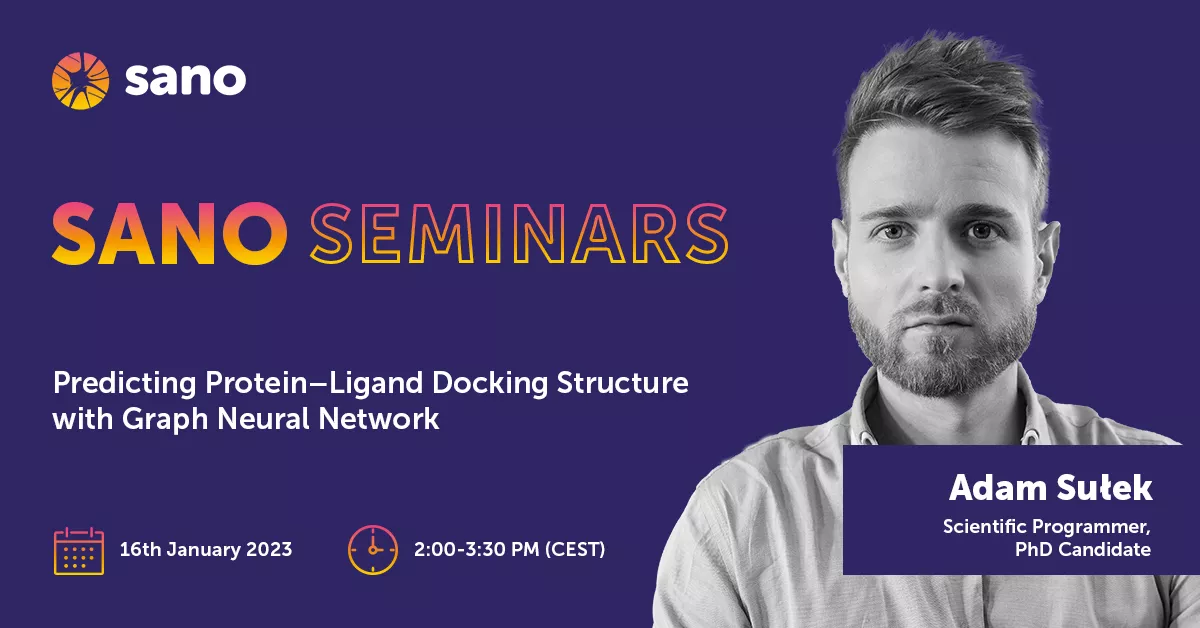
85. Predicting Protein – Ligand Docking Structure with Graph Neural Network
Adam Sulek – Clinical Data Science Team, Sano Centre for Computational Medicine, Krakow, PL
Abstract
The cost of developing a new drug doubles approximately every nine years. For that reason, computational methods can be used to speed up the drug discovery process due to identify potential drug candidates that may not have been identified using traditional methods. Molecular docking is one of the most popular algorithms to predict the binding affinity between a drug-like molecule and a protein target. However, it is a tedious and time-consuming task. Nowadays, machine learning gains special attention in drug design fields in terms of speeding up the process of predicting binding pose/affinity rather than calculating in an iterative way. In this talk I will present an equivariant neural network trained on 3D data representation.
About the author
Adam Sułek received his Ph.D. in chemistry in 2022. His Ph.D. research was on the boundary of several fields: chemistry, microbiology, and molecular simulations. He conducted a project related with a combination therapy against microorganisms. Adam currently works at Sano, Centre for Computational Personalised Medicine in Clinical Data Science Team. His current project is a multidisciplinary approach to advancing drug development that includes medicinal chemistry, drug design, and molecular docking.

